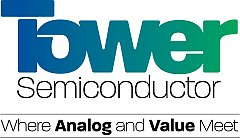
Tower Semiconductor Bets on 3D Chip Tech to Fuel Next-Gen AI Connectivity
The Israeli foundry is leveraging advanced 3D integration and silicon photonics to address the booming demand for high-bandwidth interconnects in AI and data centers, a move analysts say could be a game-changer.
Tower Semiconductor Bets on 3D Chip Tech to Fuel Next-Gen AI Connectivity
Migdal Haemek, Israel – November 12, 2025 – Tower Semiconductor, a leading global specialty foundry, today announced a breakthrough in 3D chip technology aimed at addressing the soaring demand for high-bandwidth interconnects powering artificial intelligence (AI) and high-performance computing (HPC). The company is leveraging advanced wafer-scale 3D integration and silicon photonics to create compact, high-performance modules for co-packaged optics (CPO), a crucial technology enabling faster data transfer in data centers and AI accelerators.
While the press release focuses on the technology itself, deeper investigation reveals a strategic move by Tower to capitalize on a rapidly growing market and differentiate itself in a competitive landscape. Analysts predict the CPO market will experience explosive growth over the next decade, driven by the increasing computational demands of AI and the limitations of traditional copper-based interconnects.
Addressing the Interconnect Bottleneck
As AI models become increasingly complex, the need for faster and more efficient data transfer within and between chips has become critical. Traditional electrical interconnects are reaching their limits, leading to bandwidth bottlenecks and increased power consumption. Silicon photonics offers a potential solution by using light to transmit data, enabling significantly higher speeds and lower power consumption. However, integrating photonic components with electronic chips presents significant challenges.
Tower’s approach involves stacking silicon photonic components directly onto electronic chips using a wafer-scale 3D integration process. This enables a compact and efficient co-packaged optics solution, minimizing signal loss and maximizing bandwidth. The company is leveraging its existing expertise in wafer bonding, a mature technology used in stacked image sensors, to streamline the manufacturing process.
“The industry is clearly moving toward heterogeneous integration, and CPO is a key enabler for future AI and HPC systems,” says a source familiar with the foundry’s strategy. “Tower’s ability to combine silicon photonics with its expertise in advanced packaging and specialized process technologies gives them a unique advantage.”
A Competitive Landscape
Tower is entering a competitive market dominated by established players like Intel, GlobalFoundries, and several specialized packaging companies. Intel, in particular, has been a pioneer in silicon photonics and is actively developing its own CPO solutions. GlobalFoundries offers its GF Fotonix platform for monolithic silicon photonics integration. However, Tower believes its wafer-scale 3D integration approach offers several advantages.
“There are different paths to CPO,” explains an industry analyst. “Some companies are focused on monolithic integration, while others are pursuing hybrid approaches. Tower’s approach appears to strike a good balance between performance, cost, and manufacturability.”
Another differentiator for Tower is its focus on specialized process technologies. Unlike some of its larger competitors, Tower doesn’t compete in the leading-edge logic market. Instead, it focuses on niche applications requiring specialized manufacturing capabilities, such as power management, RF, and sensors. This allows Tower to serve a different segment of the market and avoid direct competition with the biggest players.
Financial Implications and Strategic Direction
Tower Semiconductor has demonstrated consistent revenue and profitability in recent years, driven by demand for its specialized foundry services. The company’s move into CPO represents a strategic bet on a high-growth market that could significantly boost its revenue in the long term.
“This isn’t just about adding another technology to their portfolio,” says a financial analyst following the company. “It’s about positioning Tower as a key enabler for the next generation of AI and HPC systems. If they can capture a significant share of the CPO market, it could be a game-changer for their financial performance.”
However, scaling up production of advanced 3D-IC and silicon photonics modules requires significant capital investment. Tower will need to invest in new equipment and manufacturing processes to meet the expected demand. Yield management will also be crucial, as the complexity of 3D integration can impact manufacturing efficiency.
“There are inherent risks involved in adopting new technologies,” admits a source within the company. “But we believe the potential rewards outweigh the risks. We’re confident that our expertise in specialized manufacturing and our strategic focus on niche applications will allow us to succeed in this market.”
The Rise of Heterogeneous Integration
Tower’s move into CPO is part of a broader trend toward heterogeneous integration, where multiple chips with different functionalities are combined into a single package. This allows for optimized performance, power efficiency, and cost. Chiplets, small, modular dies that can be combined to create complex systems, are also gaining traction.
“The industry is moving away from monolithic designs toward more modular and heterogeneous architectures,” explains a semiconductor industry expert. “This allows for greater flexibility, faster time-to-market, and reduced development costs.”
Tower’s CPO solution is well-positioned to benefit from this trend, as it enables the integration of photonic and electronic components into a compact and efficient package. The company is actively exploring partnerships with chiplet developers to create complete systems for AI and HPC applications.
Looking Ahead
Tower Semiconductor’s announcement marks a significant step forward in the development of advanced 3D chip technology. The company’s wafer-scale 3D integration approach offers a compelling solution for addressing the growing demand for high-bandwidth interconnects in AI and HPC. While the market is competitive, Tower’s specialized foundry expertise and strategic focus on niche applications position it for success. The next few years will be critical as the company scales up production and ramps up its CPO offerings, but the potential rewards are substantial. As the demand for AI and HPC continues to surge, Tower Semiconductor is poised to play a key role in enabling the next generation of computing systems.
📝 This article is still being updated
Are you a relevant expert who could contribute your opinion or insights to this article? We'd love to hear from you. We will give you full credit for your contribution.
Contribute Your Expertise →